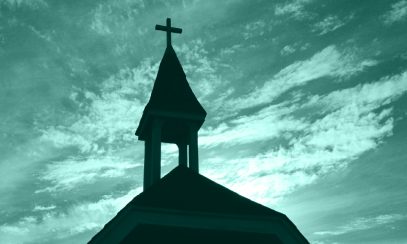What are the 'Gnostic gospels'?
Dear Fr. Joe: Okay! Last month, you talked about the problems with the book “The Da Vinci Code.” According to these stories, the church works hard to suppress writings that may be true. Are there other ‘gospels’ such as the “Gnostic gospels.”? What are they? Are they for real?
Dear Fr. Joe: Okay! Last month, you talked about the problems with the book “The Da Vinci Code.” According to these stories, the church works hard to suppress writings that may be true. Are there other ‘gospels’ such as the “Gnostic gospels.”? What are they? Are they for real?
A fascination with these so-called gospels has been manifested in all sorts of popular culture outlets – movies, books, articles, etc. In this article, I hope to give real examples of our fascination with these writings and show a bit about where they come from.Let’s start with a popular movie, made in 1999, called “Stigmata.” I remember my students asking me to watch it and tell me how accurate it was. This thriller was about a priest who was called on by the Vatican to research the Gnostic writing, the “Gospel of Thomas.” As a result of his research, he became an enemy of the church because he now knew “the truth about Jesus.” He came to believe that the “Gospel of Thomas” was the authentic Gospel written by Jesus himself and that the others – Matthew, Mark, Luke and John – came afterward and were put in the Bible by the church, so the church could maintain its power.
At the end of the movie, words come up on the screen to inform the viewers that the “Gospel of Thomas” is a real document “written in Aramaic,” and that “many scholars” believe it to be the real words of Jesus, written by Himself.
Now, to be fair, it may be true that “many scholars” believe the “Gospel of Thomas” to be authentic, but they are certainly not biblical scholars. As a side note, the “Gospel of Thomas” wasn’t written in Aramaic. It was written in Coptic, an ancient Egyptian language, which I believe used Greek symbols.
That movie promoted a lot of confusion in young people who watched it, and I believe it is along the same lines as “The Da Vinci Code” in its concepts. Both are based on the Gnostic gospels.
So what are these “gospels?”
They are the writings of a religious sect that predated Christianity by a good amount of time. Possibly rooted in Babylonian mysticism, a basic tenet of this religion is that salvation can be attained through the discovery and mastery of certain “secrets” about God, heaven, and life itself. This knowledge is not for everyone. Thus, this religion steeped itself in secrecy. Gnosticism remained “under the radar” for quite some time, and is only recently re-emerging as a factor in world religion.
So, how did this group get so involved in Christianity to the point that some of their writings were about Jesus? Well, we gotta take a history lesson here. Remember, from the beginning of the Church (A.D. 33) until Christianity became legal (A.D. 314), Christianity was an illegal, underground religion. Christians had to meet after dark in secluded places and use secret signs to communicate. During this time period, different groups invaded the Christian underground and began to spread their own unique blend of their religion and Christian thought.
During this time, Christian leaders such as Origen, Clement of Alexandria and others wrote to Christians, warning them about false writings that were disguised as Christian writings. Now, I am simplifying a bit, but a key reason these leaders wrote against these Gnostic writings is because, quite literally, salvation is offered to everyone – not a select few who attain “secret knowledge.”
When Christianity exploded from the underground in the early fourth century, there were innumerable Christian sects that came out of hiding and began to communicate with each other. Certain premises were universally embraced among these Churches, and certain ideas were universally condemned. A council was convened at Nicaea, in order to determine what was Christian and what was not. It’s from this council that we get the Nicene Creed.
This council provided clarity for Christians then and today, as it informs us what the Apostles passed on to their successors. Some of what is written in the Nicene Creed is a direct response to Gnosticism. As a result of this council and the success of the inclusive Christian message, Gnosticism faded away.
Let’s get to the common theme in movies and books that the church has worked to suppress these Gospels. At the beginning (meaning the first 300 years of Christianity), the church did work hard to fight these Gnostic writings, but lacked the political power to muscle any group out. Remember, we were the persecuted ones – not the ones doing the persecuting.
As time went on, the church didn’t have to suppress the Gnostic writings. They had little to no following. Reading some of these “gospels” should easily give one the sense as to why. Confused, convoluted and bizarre beyond reckoning, most people who’ve read them have read edited versions that have removed a great deal of the “weirdness” that they contain. Stories like the one where Jesus killed children for making fun of Him, and then raised them back to life at the behest of His mother, are par for the course in some of these Gnostic writings. Interspersed into these are passages that are pirated from the four Gospels that we read. Unfortunately, Hollywood handles this by dropping the bizarre in favor of the more palatable or even poetic quotes, like the one verse used over and over in “Stigmata.” “The kingdom of God is within you and all around you. It is not within buildings of wood or stone. Split a piece of wood and you will find me. Look beneath a stone and I am there.” (Gospel of Thomas, v. 3)
These confused and confusing writings, coupled with their exclusive theology, doomed Gnosticism to a lifetime of obscurity. The church didn’t need to work hard or send out assassins to cover these up. On my bookshelf, I have copies of all the Gnostic writings that I bought at a Catholic bookstore in 1993. Their copyright date? 1901. Why did I buy these books? I needed them for my Scripture and history classes at seminary. If the Church was working hard to cover it up, they did an exceptionally lousy job.
If you want to take a look at translations of these writings on the Internet, you can go to: wesley.nnu.edu/nocanon/gospels.htm
I hope this has been helpful!
Enjoy another day in God’s presence!



